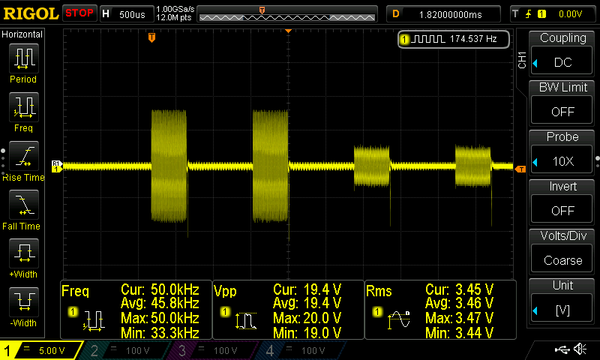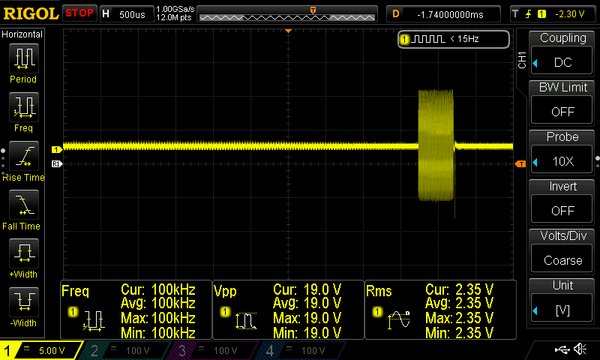Adrian, since you've been looking at these for some time, what is the P-P voltage of a properly working chip? Is it like the highest amplitude on my previous post, or should I be expecting more?
Should be about 14 to 15V pk2pk new out of the box.
As we already have a 1,2,3, I will use A, B ,C
A) If we are trying to define a base line of a good DCS Signal output, do we need to define which DCS signal we are measuring? When I tested the clubs TIU's and new out of the box TIU's, I test the watchdog signal produced from pressing the "start up" button on the hand held and I get readings in the 17-19 vpp range. Pictures below are from my 3 year old home TIU which I just took. Are my setting off on the scope? Question resolved, in the pictures below there is a spike at the end of the signal burst that the scope picked up, which increased the readings by 4-5v. Without the spike the readings are in the 14-15v range. Thanks GRJ! When the intensity of the scope is turned up the spike is quite evident. Need to go back to old school and read the picture and not the number readings on the digital scopes.
B) In one of the above responses it talks about removing the MTH installed TVS to get full signal back. Would this work? From my understanding TVS's fail either in an open or short condition not in a quasi short condition.
C) I also have run into TIU ports which have reduced output. What is the easiest way to test the ACT244 chip to see if it is the cause of the reduced power.
Bob D





































